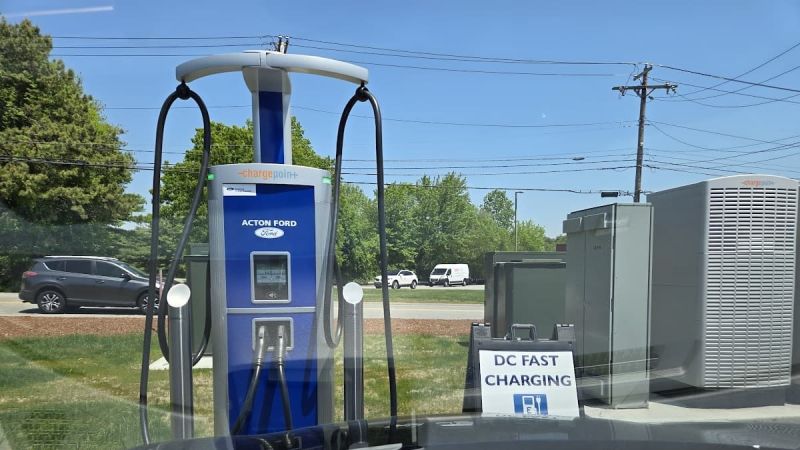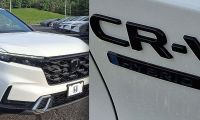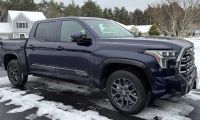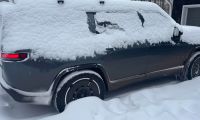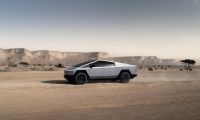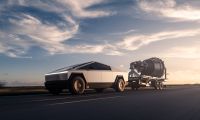Ford presently has the number-one-selling electric truck in America, along with the number-three-selling EV overall, the Mustang Mach-E. In addition, Ford has a long list of electrified vehicles, such as its e-Transit vans and Maverck hybrid-electric vehicles, that are filling important niches for private owners, fleets, and municipalities. Over the past nine months, we’ve been looking very closely at Ford’s commitment and actions related to green vehicles and have come to the conclusion that Ford walks the walk.
Related Story: Ford Dealers Are Driving Into the Future of EVs With Massive Investments
Your author has not attended any Ford EV or electrified vehicle press events. Nor did I contact Ford before this story was developed. What you are going to read is just our real-world, on-the-ground research, talking to Ford dealers and trying the chargers in the Metro Boston, Northern Metro West Boston, and Central New Hampshire regions.
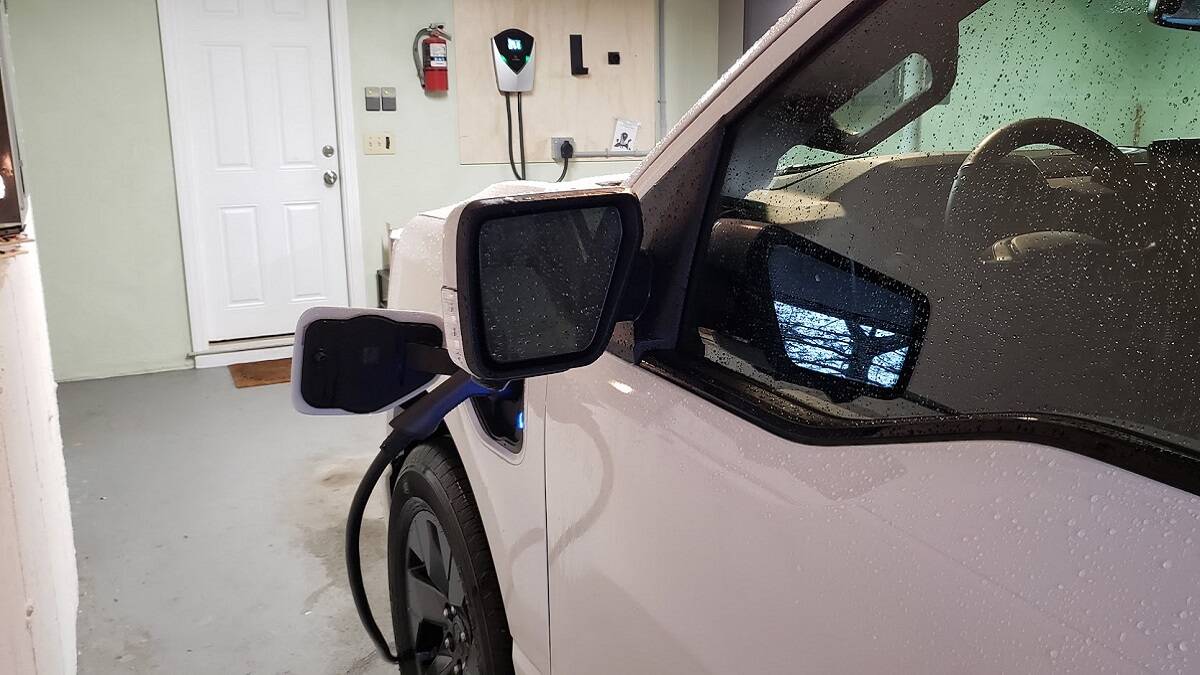
A Quick Note About Charging
Your author is well aware that most EV owners charge at home most of the time. I’ve done many polls in many forums, and that is a fact nobody disputes. I can also charge at home. I have both NACS and J-plug 40-amp wall-mounted chargers in my garage, and I own a mobile charger of each type as well. This story is related to public charging. As EV adoption grows, more folks will need to charge in public for various reasons.
How Ford Is Expanding EV Charging In America
Ford is expanding charging options for its customers and the general public in numerous ways. The first move you may have heard a lot about is Ford partnering with Tesla to allow Ford vehicles to charge at Supercharger locations. Ford says this has opened up 15,300 fast charging points in North America for Ford EV owners. Ford has also partnered with many other charging providers to ensure its Blue Oval billing can work with those sites.
This story will focus on what Ford’s dealers have been up to. Across America, Ford dealers have been making massive investments. They are adding not just level 2 chargers but also DC fast chargers in big numbers to their dealer properties. We even found level-one options. To say that many Ford dealers have stepped up is an understatement. There are three Ford dealers in the areas that your author travels, and we will report our findings on all three.
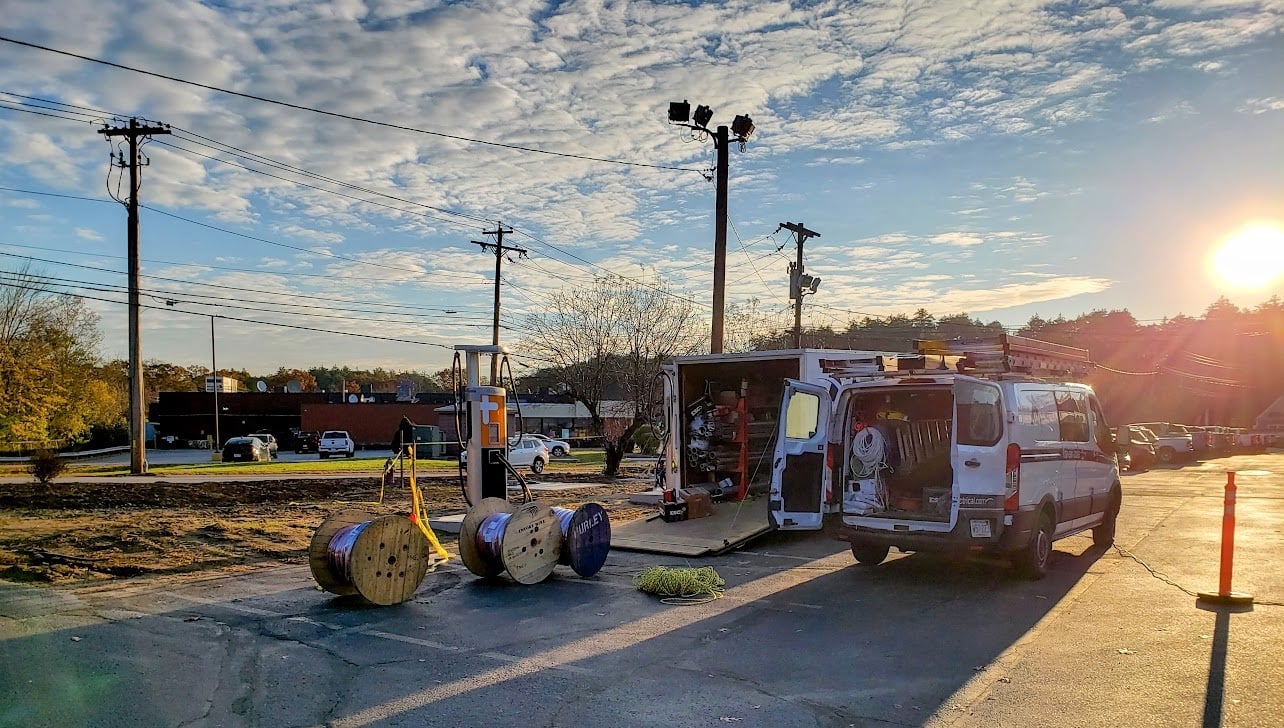
New EV Chargers In Great Locations Installed by Ford Dealers
During our nine months of research on this story, we watched as Acton Ford and Townsend Ford in Massachusetts and Hillsboro Ford in New Hampshire dramatically increased EV charging convenience for customers and the general public. All three dealers now offer public DC fast charging and Level 2 charging. We will detail each location and explain why Level 2 might make sense if DCFCs are on site.
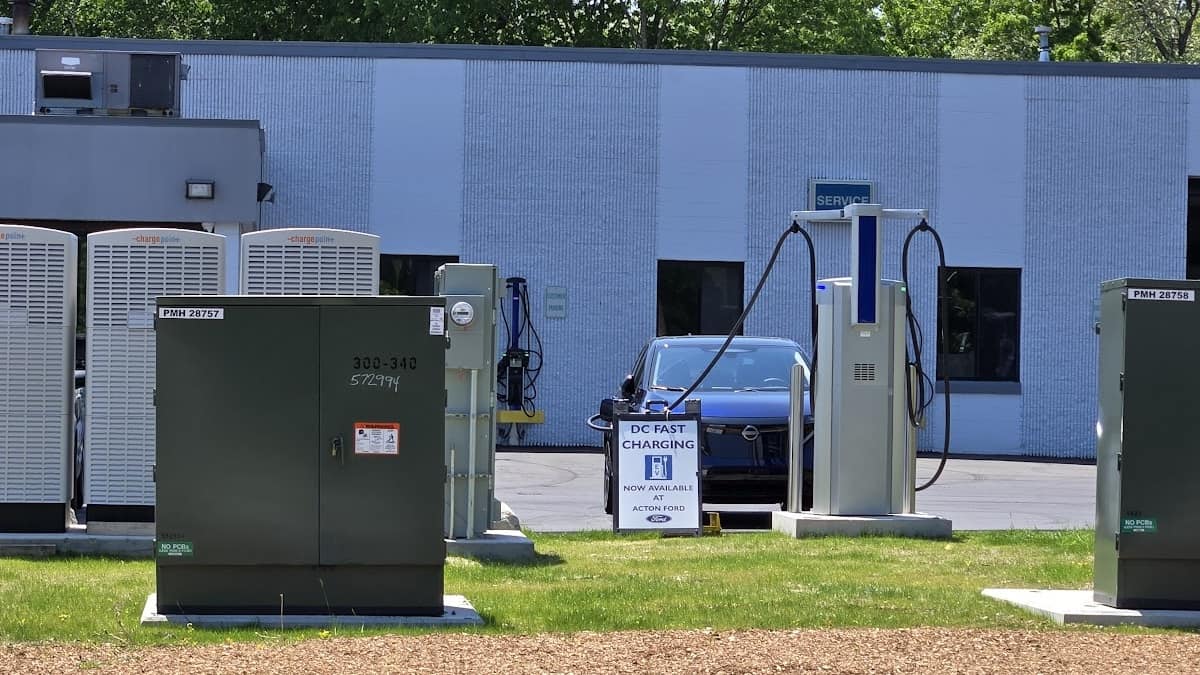
Acton Ford - Metro West Boston, Massachusetts - DCFC and Level 2 Chargers
Of the three dealers, Acton Ford is the dealership located in the most EV-active area. Acton Ford is just minutes from numerous affluent and very green towns, such as Concord and Sudbury, and within easy reach of shoppers from the inner circle of Boston suburbs. We met with Chris Abatsis, the General Mananger, and spoke at length with him prior to the opening of the dealer’s new DCFCs. Acton Ford already had a pretty impressive number of Level 2 chargers open to the public prior to the big expansion. What the location offers now is hands-down the most impressive charging location in the area.
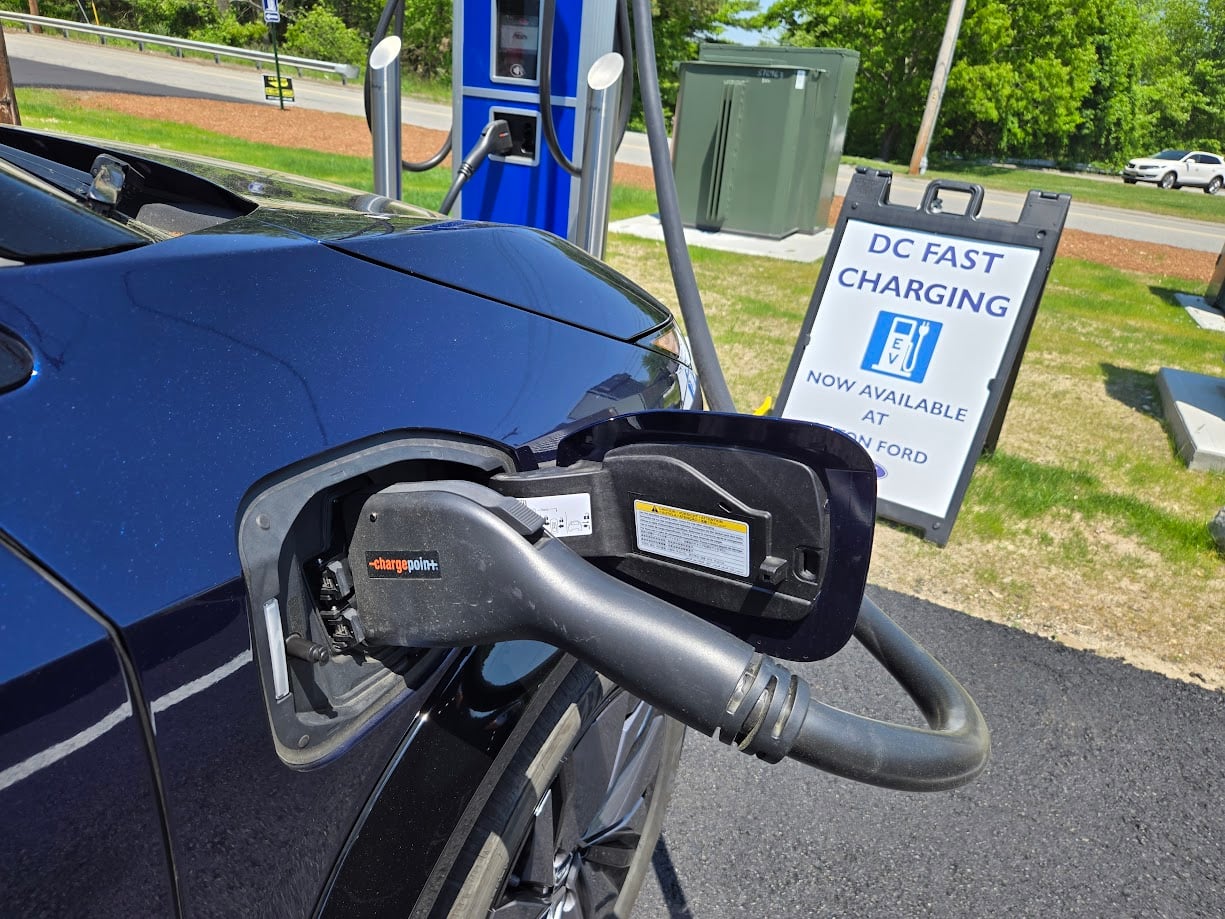
Acton Ford is located on Rt. 62, and is very close to routes 27, 111, and busy Rt. 2. This puts it in a very unique place. There are already DC fast chargers on many of Massachusetts’ major arteries, but there were few in Metro West Boston before Acton Ford made its move. The location has fast food, a pharmacy, a bank, a supermarket, and many other amenities adjacent to the chargers in a plaza.
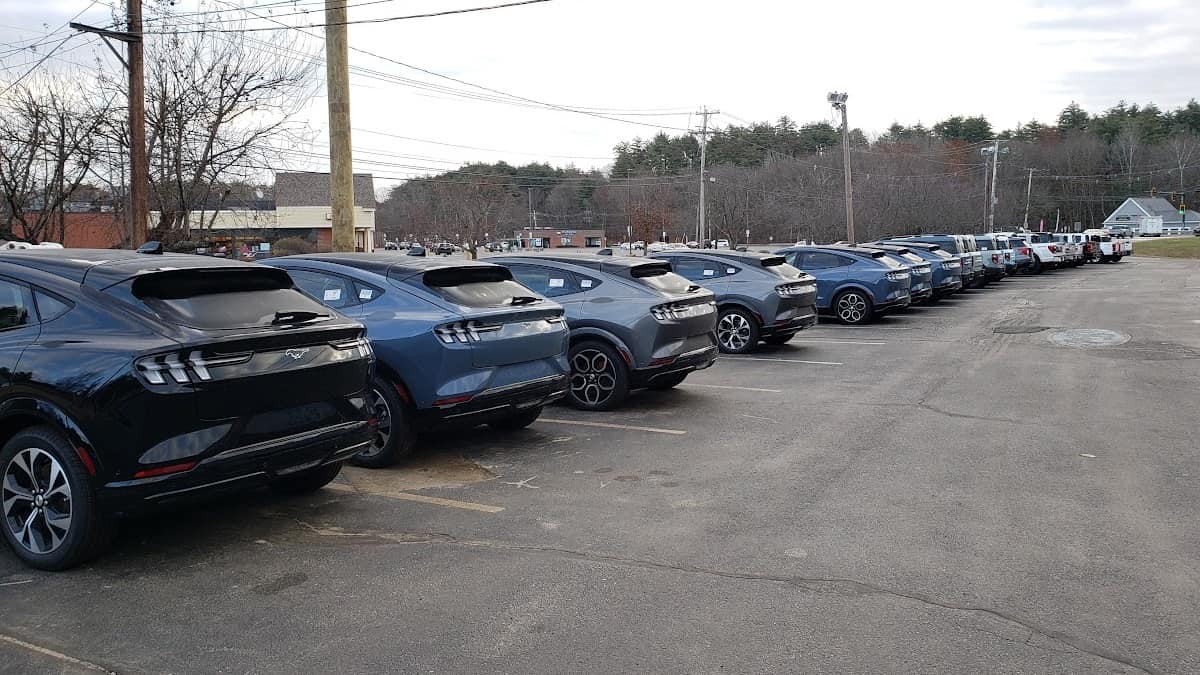
Acton Ford has added three 120 kW Dual Port DC Fast Chargers. Users can operate the six chargers via their ChargePoint account or, if they own a Ford EV, via their Blue Oval network account. We charged up a Nissan Ariya media test vehicle at the DC Fast chargers and used our ChargePoint app. While we charged, we were the only car charging. This being a test, not an urgent necessity, we started at 69% SOC and ended at 85% SOC. The charger added roughly 1% SOC per minute, dramatically faster than one can charge using L2 chargers. The cost is $0.55/kWh. Acton Ford’s three 19.2 kW Level 2 chargers are less expensive. To ensure that the dealership’s sales and service activities are not tying up those public charge points, Acton Ford added a whole row of L2 chargers inside its building for its own use.
Overall, Acton Ford’s setup is perfect. The area is well-lit, there are services nearby, even the landscaping and paving are all new. It is clear that Acton Ford has made a long-term commitment to EVs and to being a good neighbor by offering its charging to an owner of any brand vehicle.
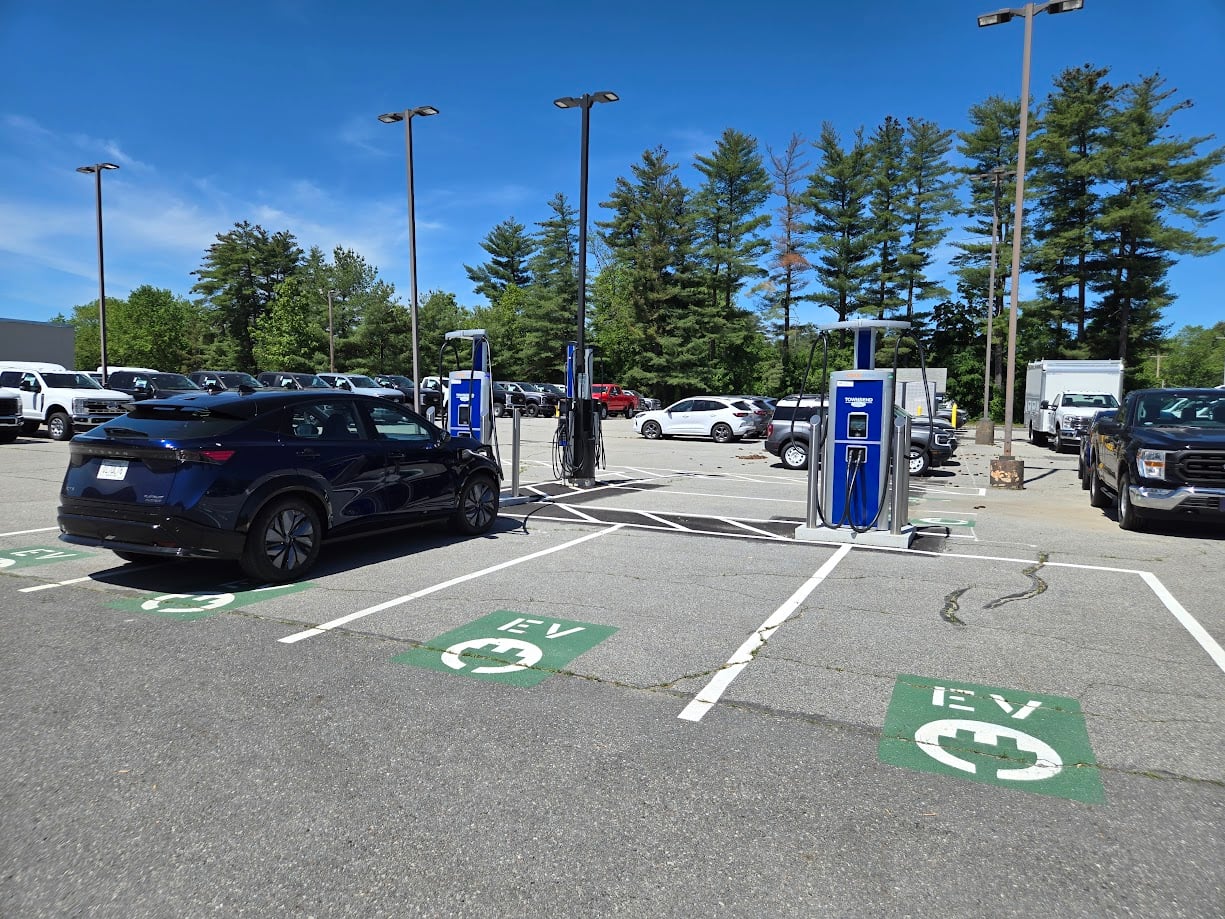
Townsend Ford - North Metro West Boston Area, Massachusetts - DCFC and Level 2 Chargers
Townsend Ford is not in the same type of environment and neighborhood as Acton Ford. It’s located on Rt 119 and near Rt. 13. Both are rural roads. We would assume this is a location with a bit less EV owner demand. Still, the dealership stepped up. There are two dual DCFCs at the location—so four DCFC charge spots. There are also multiple Level 2 chargers available. All were available when we test-charged. Like the Acton Ford location, one can use Blue Oval or ChargePoint to initiate and pay for charging. There are services nearby, such as a coffee shop and fast food burger joint, but they are not adjacent. The price for DC charging is a steep $0.68/kWh. The L2 chargers are $0.50/kWh.
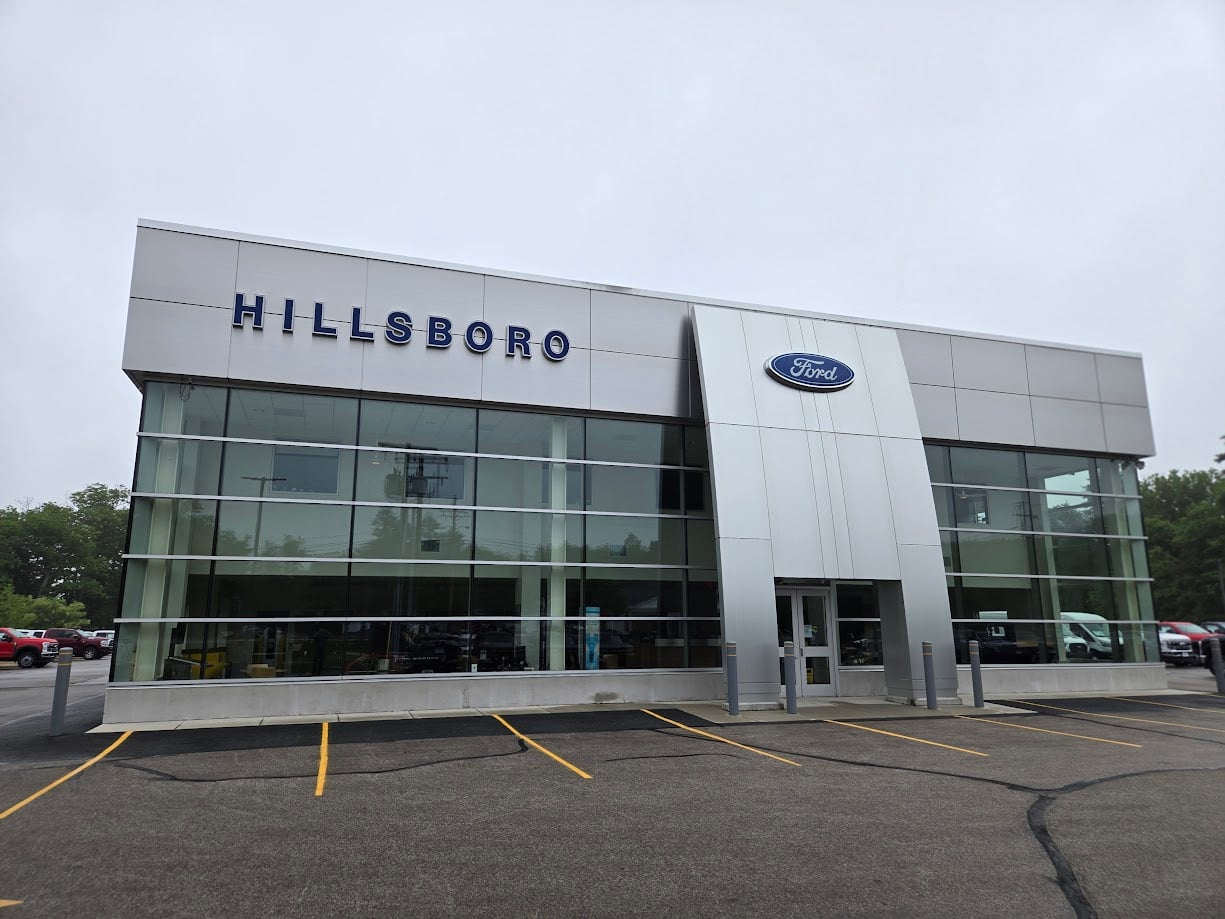
Hillsboro Ford, Lakes Region, South-Central NH
Hillsboro Ford is an area that is not what would be described as affluent and is decidedly rural once one leaves downtown Hillsboro. The dealership is on the banks of the Contoocook River, which feeds multiple local lakes. It is at the junction of routes 202 and 9, both very important east-west corridors in rural NH. Services such as food, pharmacy, and more are within walking distance from the chargers.
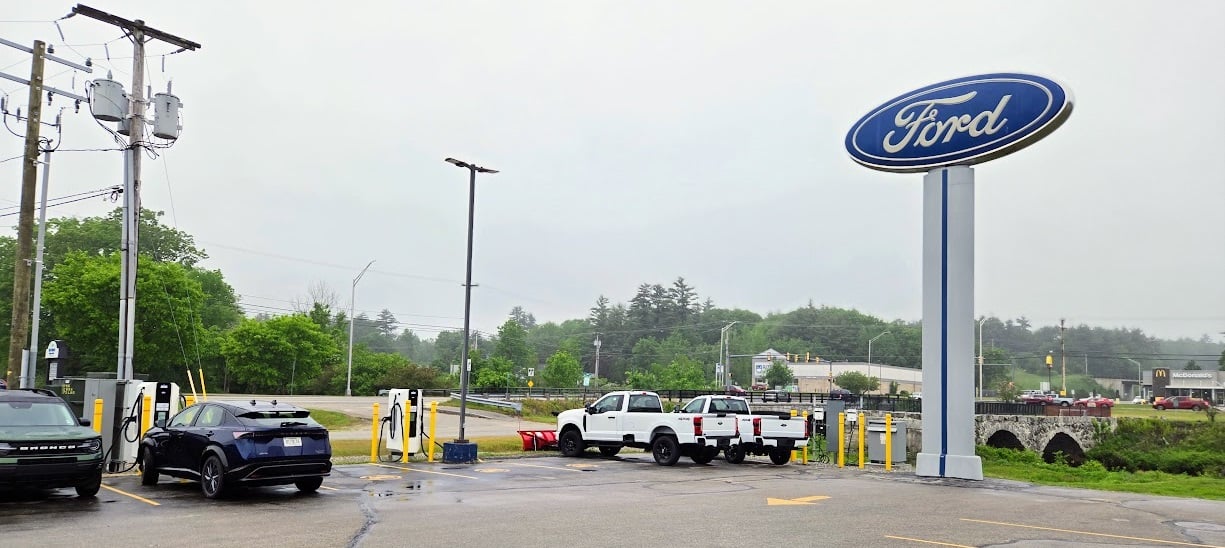
There are two dual DCFCs at Hillsboro Ford, plus some L2 chargers and a bonus L1 dual plug outlet. We tested out the DCFCs and found one was inoperable, and three were working. We paid $0.49/kWh for the DCFC charger. Payment can be made here using the Blue Oval network app (on Ford Pass), ChargePoint, or Shell's app, along with a credit card swipe or tap. We opted to use the credit card.
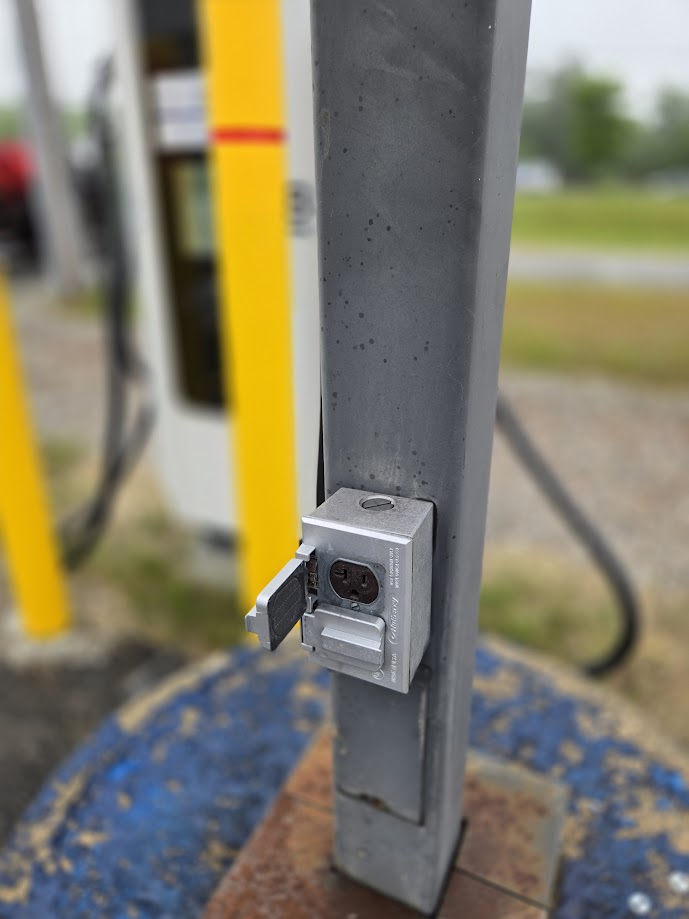
My Personal View of the Blue Oval Chargers At Ford Dealers
These chargers added by Ford dealers are extremely useful. When I traveled from my home in Metro Boston to the Lakes Region, I would not pass or drive near any DCFCs. In fact, two years ago, in my reporting, I called this area a “charging desert.” Now, there are fast chargers at the start of my ride, the mid-point, and the end, all because of Ford dealers. Even better, the chargers seem a lot more available than the chargers on major highways. Maybe the word hasn’t gotten out that they are in operation yet. These locations are new, having gone online in the last few months.
Public Charging Etiquette and Why High DCFC Prices Are a Good Thing
A lot of best practices around fast charging have developed. There are two that every person charging for the first time should be mindful of. First, it is impolite to charge past 80%, even if you don't see anyone waiting. That is because EVs don’t accept charging at a constant rate. They slow down around 80%. You may not see anyone waiting, but the availability of the charger may be visible on an app. So, if you slowly charge to 100%, you may be inconveniencing a fellow EV owner and not even know it.
Second, folks who DC fast charge a lot generally arrive at a low state of charge and are in need of charging. Topping up from 69% to 85%, as I mentioned, is impolite since it can tie up chargers. Using DCFCs is more or less need-based. If you live nearby and cannot charge at home, using the L2 chargers will be less expensive for you and will keep the DCFCs open for those who are in a situation where they must charge now. All that said, if you see a row of empty DCFCs, do what you like.
DC fast charging is expensive. It is hands-down the most expensive way to power a green vehicle and much more expensive than powering a hybrid on a per-mile basis in this region of the country. Personally, I think DC fast charging should be very expensive. We need to keep the limited chargers we have in operation available for travelers. Therefore, the way all of these Ford dealers operate is sensible. Make the fast chargers very costly to dissuade topping up and casual charging. Make the L2s much more affordable for local residents who are going to charge on a daily basis. I support stiff idling fees for the same reason. There is no reason anyone should ever be plugged into any public charger and be full or not charging. Fees can help drive more sensible behavior.
The Bigger Picture - Ford EV Charging Options Near You
Our overview here covers just two states and really just one region in New England. You can check to see if your local Ford dealer has added charging by going to PlugShare or using Google. You can also simply phone the dealership. When we phoned all three of these locations anonymously, the employees we spoke to were all very knowledgeable about the chargers and were able to explain the billing and power ratings.
Ford’s dealer network is adding significant charger capacity at great expense. If you own an EV, it would be wise to see where new charging options near you have popped up. More importantly, if you are making a road trip, and need to find charging, look at the Ford dealers on your route. As our story explains, you need not be a Ford owner to use these chargers. They are open to the general public.
If you'd like to add a comment under this story, please note that our comments section has returned and is in bold red at the bottom of the page.
John Goreham is an experienced New England Motor Press Association member and expert vehicle tester. John completed an engineering program with a focus on electric vehicles, followed by two decades of work in high-tech, biopharma, and the automotive supply chain before becoming a news contributor. In addition to his eleven years of work at Torque News, John has published thousands of articles and reviews at American news outlets. He is known for offering unfiltered opinions on vehicle topics. You can connect with John on Linkedin and follow his work at our X channel. Please note that stories carrying John's by-line are never AI-generated, but he does employ Grammarly grammar and punctuation software when proofreading.



